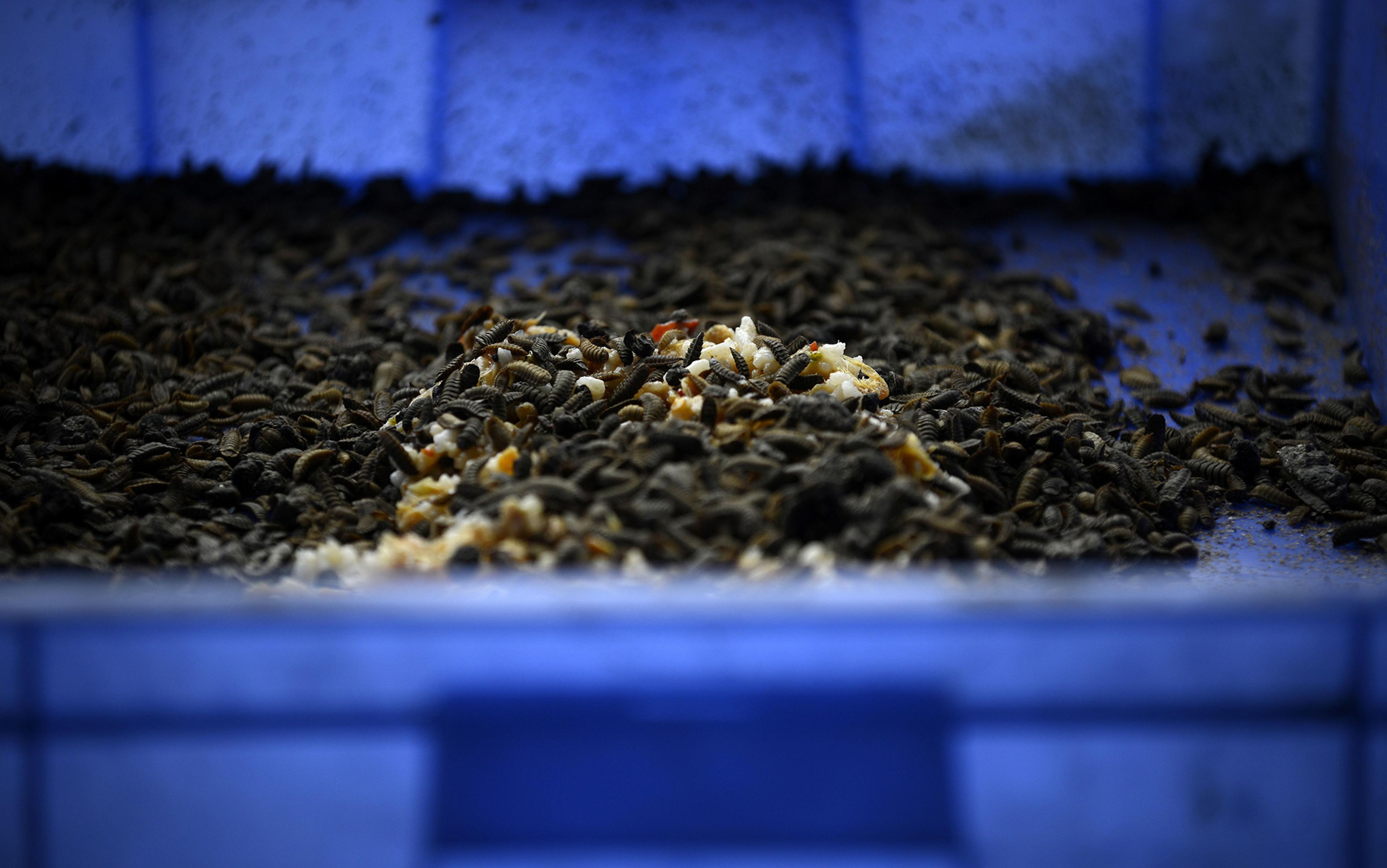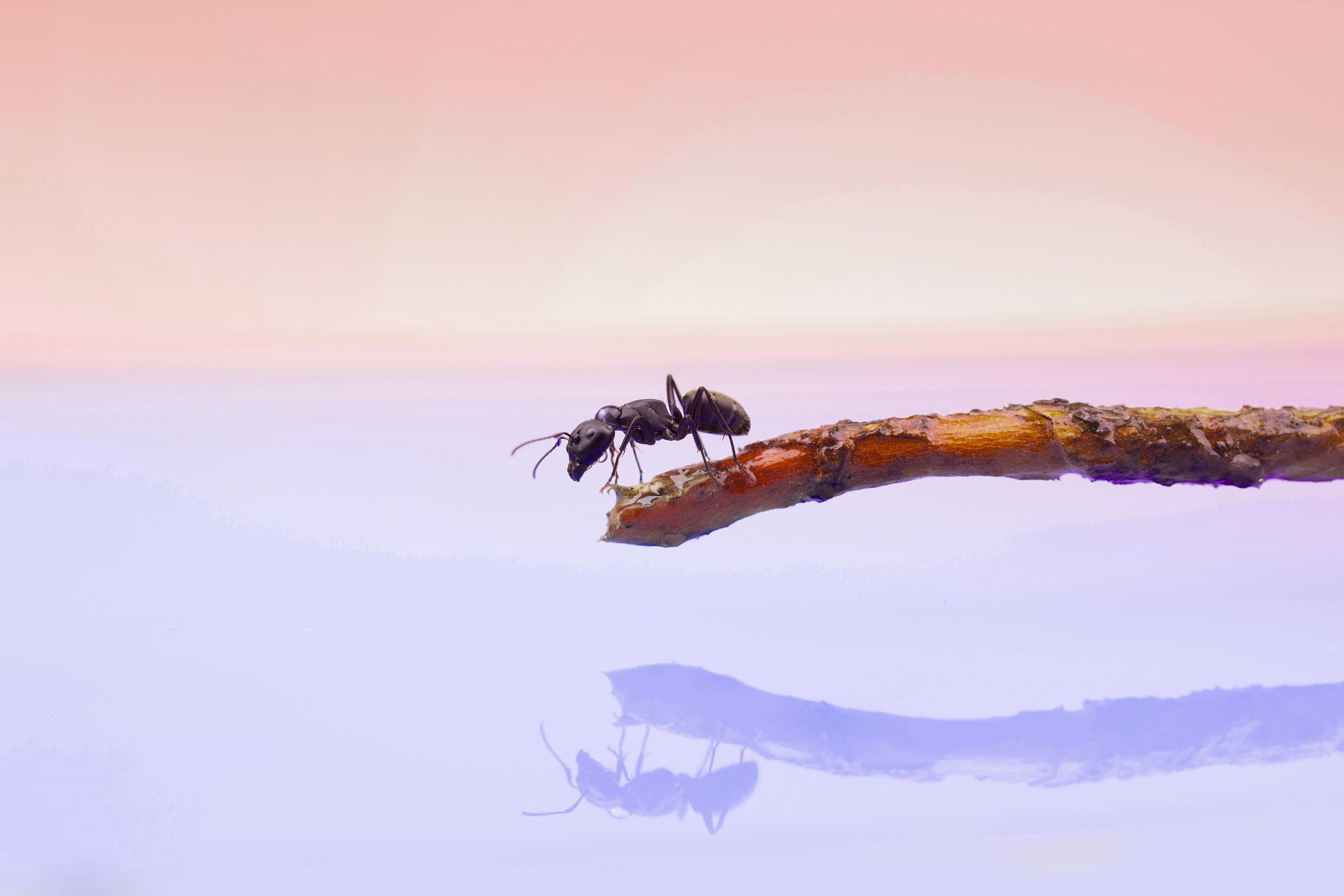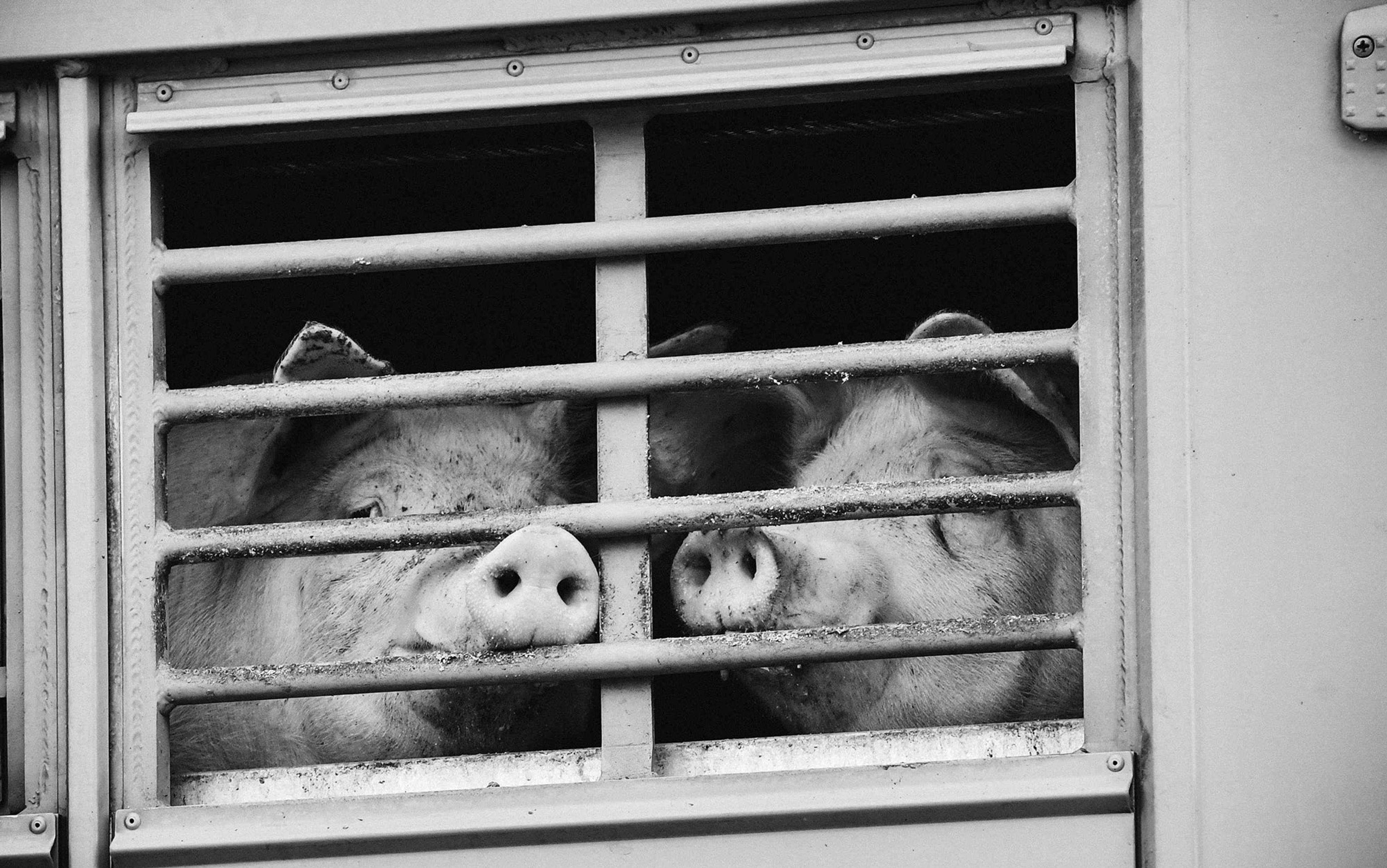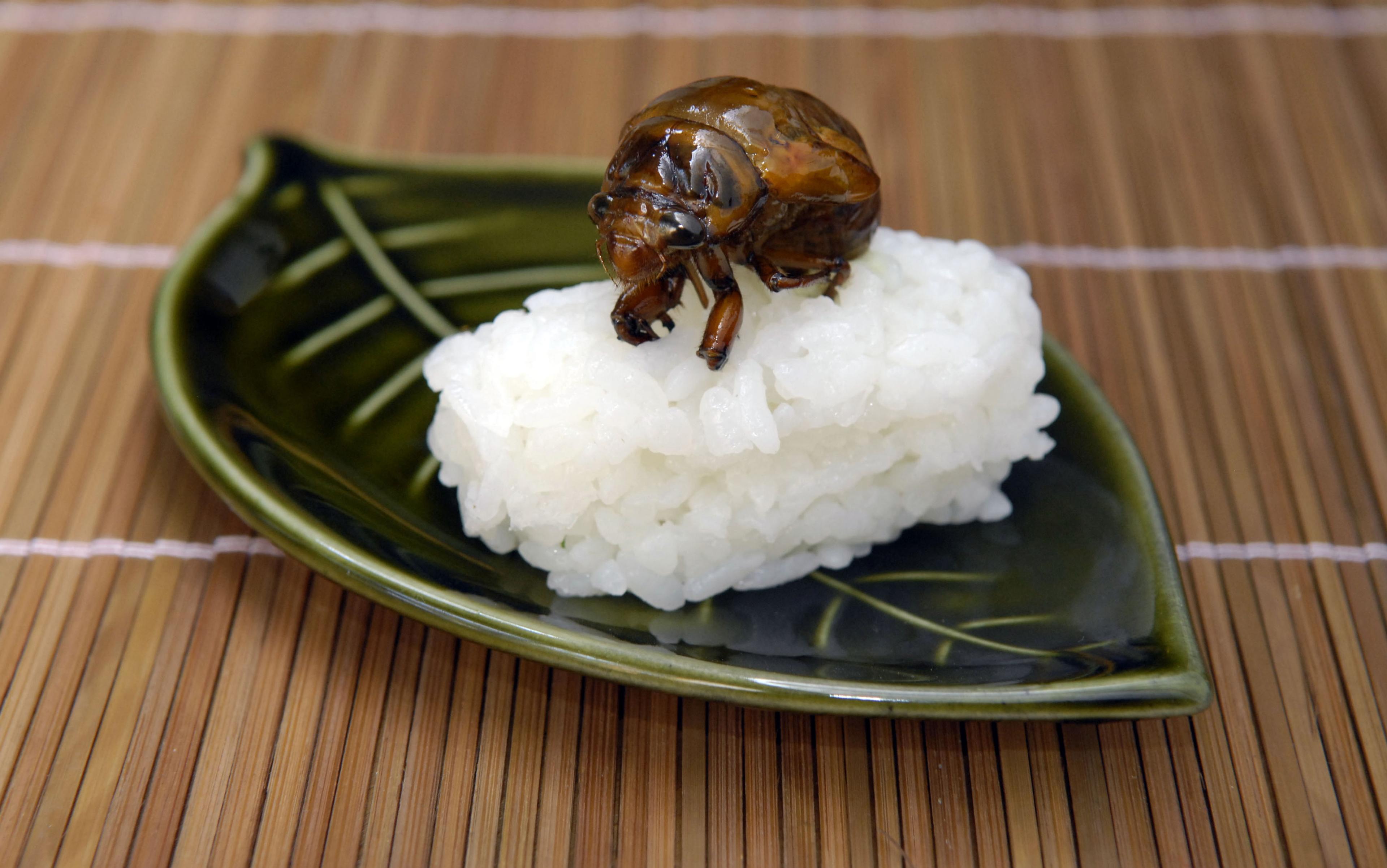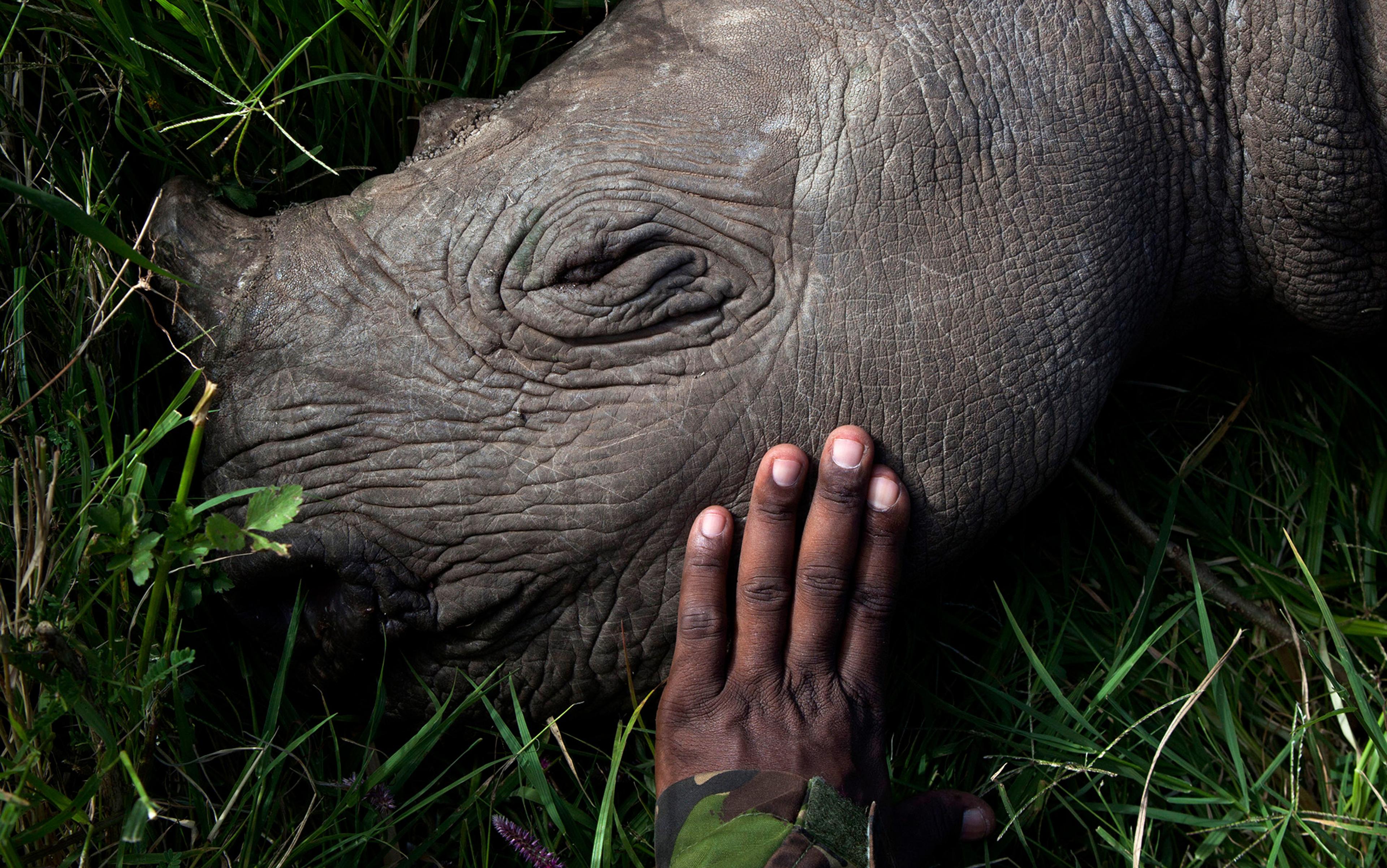The future of animal farming is taking shape in a small city in central Illinois. A startup called InnovaFeed is building a production site that will house more farmed animals than any other location in the history of the world. But the animals in question are not cows, pigs or chickens – they are black soldier fly larvae.
When the facility is fully operational, InnovaFeed hopes to produce 60,000 metric tonnes of insect protein from the fly larvae each year. By one conservative estimate, that amounts to around 780 billion larvae killed annually. If you lined up that many larvae end-to-end, the line would stretch from Earth to the Moon and back 25 times.
Interest in insect farming is booming. Insects have been heralded as a sustainable alternative to traditional animal agriculture, with a litany of articles touting the environmental benefits of insect protein. Socially minded investors have piled into the space, with recent funding rounds totalling more than $950 million. InnovaFeed plans to construct 20 production facilities by 2030. The company competes against the likes of AgriProtein in South Africa and Ÿnsect in France, both of which harbour comparably ambitious goals. The industry is small now, but poised to grow 50 times larger in the next decade.
Lost in all the hype is an uncomfortable question: do we want to encourage a food system that farms animals by the trillion?
By number of animals killed annually, the most farmed insects are crickets, mealworm beetle larvae and black soldier fly larvae. The most common slaughter methods on these farms include baking, boiling, freezing and shredding. In most jurisdictions, there are no welfare regulations that govern insect slaughter. Operators are free to kill the insects in whatever manner is most efficient.
The word ‘farm’ typically evokes images of green pastures, but insect farms are industrial complexes – more akin to manufacturing plants than pastured meadows. Black soldier fly larvae and mealworm beetle larvae are generally raised in large plastic bins, while crickets are raised in cardboard lattices. Although some farms pay lip service to the welfare of their insect livestock, in practice the animals are too numerous to be treated as anything other than a material input to a chemical process. On one black soldier fly farm in China, workers use a vacuum tube to transport live insects from their growth racks to a mechanical separator that sorts larvae from waste. The animals are then loaded onto a conveyor belt and sent through a large oven to be baked to death. The dried insects can be processed into pellets, chitin, oil and powdered meal.
There is much we do not know about the conditions in which farmed insects are reared. Industry executives are tight-lipped about proprietary strategies that might give them a competitive advantage. But concentrated animal agriculture has not gone well for the estimated 74 billion land animals and approximately 51 to 167 billion fish killed for food on commercial farms every year. We have little reason to suspect that farmers are taking better care of insects. To be profitable, insects must be farmed at very high densities. And while some species of insects prefer group living, for others, high density is likely to increase the risk of disease and cannibalism. As with other animals subjected to factory farming, humans are pressing insects into conditions for which they are not well adapted.
While insect farming is the newest way in which humans kill insects in large numbers, it is far from the only way. Humans kill insects for silk, for carmine dye, for shellac (a type of resin) and for many other products. We apply insecticides in our homes, schools and offices. Most significantly, farmers spray vast amounts of chemicals on our fields and orchards, killing more than a quadrillion insects every year with agricultural pesticides.
Whether we should care about what humans do to insects depends, in part, on the moral status of insects. Some people believe that all animals, no matter how small, matter morally. Many others reject this view, arguing that only sentient creatures – who can consciously experience pleasure and pain – matter from a moral point of view. Even if we accept this more restrictive view, we should be wary of mistreating insects. Insects might be sentient. And given the number of individual animals at stake, we should err on the side of caution.
The scientific evidence for insect sentience is stronger than you might expect. Despite vast differences in size, body plan and evolutionary history, insects exhibit many of the same traits that we typically take to be evidence of sentience in mammals.
First, insects engage in some behaviours that suggest a capacity for positive and negative experiences. For example, fruit flies seem to be capable of anhedonia, a loss of interest in activities previously found to be rewarding, and a common symptom of human depression. If you expose flies to aversive vibrations over several days, their activity begins to change in predictable ways. The shaken flies show reductions in various voluntary actions, though their reflexive behaviour remains unchanged. In particular, shaken flies consume much less glycerol (commonly used as a reward in fruit-fly studies) than non-shaken controls, suggesting that the shaken flies have lost their taste for sweets. This same method – subjecting animals to uncontrollable negative stimuli – induces similar behaviour in dogs and rats. Researchers who treated a group of shaken flies with the human antidepressant lithium chloride found that the ‘treatment can suppress this depression-like state in flies’.
Even decapitated cockroaches are capable of relatively impressive feats of learning
Second, some insects display behavioural flexibility and social learning. In one recent study, researchers trained bumble bees to see that a ball could be used to dispense a reward. Untrained bees were able to pick up on the trick merely by observing the trained bees at work. In subsequent experiments, the bees independently learned to solve the task more efficiently by using a ball positioned more closely to the target. The video below of the bees in action appears to show directed, purposeful behaviour. (It is also inexplicably adorable.) This evidence shows that insects are more complex than we appreciate. More importantly, it suggests that they possess some of the features that, according to some philosophers, indicate conscious experience.
What might underpin the similarities between insects and mammals? Neurobiologists are increasingly noting that insect brains share some fundamental circuitry with mammalian brains. For instance, both insects and mammals have specialised brain regions for the processing of spatial information and the organisation of movement. This sort of processing is sometimes posited as the basis for conscious experience. The genes that produce nociceptors (specialised cells that alert animals to danger) are remarkably similar across insects and mammals. And at the molecular level, some of the same chemicals that are central to pain processing in mammals mediate chronic pain-like behaviour in insects as well.
Naturally, the evidence does not all point in one direction. While insects have many traits that suggest sentience, they have at least some traits that suggest non-sentience as well. For example, mantids are known to continue mating even as they are devoured by their partner. Injured honey bees do not show more of a preference towards morphine than non-injured honey bees. And even decapitated cockroaches are capable of relatively impressive feats of learning. These behaviours are a reminder that we are only at the start of understanding insect minds, and that it would be a mistake to anthropomorphise them too much.
A deeper problem – which arises not only for insects but for everyone – is that we are still unsure what gives rise to conscious experience in the first place. Philosophers and scientists have struggled with this question for millennia. Recent advances in neuroscience are promising, but there is no guarantee that any amount of scientific progress will be able to solve the hard problem of consciousness. As a result, we might never know with certainty what physical processes produce conscious experience and, so, which physical beings can consciously experience states like pleasure and pain.
For all these reasons and more, the only reasonable position about insect sentience at present is a state of uncertainty. We should neither believe that insects are definitely sentient nor believe that insects are definitely non-sentient. Instead, we should believe that insects might be sentient. For whatever it might be worth, our current view is that insects are about 20-40 per cent likely to be sentient, given the evidence available. But for our purposes here, we will simply assume that there is a non-negligible chance that insects are sentient, by which we mean that insects are at least 1 per cent likely to be sentient.
You might think that if insects are more likely than not to be non-sentient, then we are morally permitted to treat them as non-sentient. But that would be a mistake. Consider an analogy. Suppose that, if you drink and drive, there is a 1 per cent chance that you will kill someone. Are you permitted to treat drinking and driving as harmless, simply on the grounds that this action is much more likely than not to be harmless? Of course not! If there is a non-negligible chance that this action will kill someone, then you have a moral responsibility to consider that possibility when deciding what to do.
We should think about our treatment of insects similarly. If there is a non-negligible chance that insects are sentient, then killing insects is like driving drunk; it imposes a non-negligible risk on others against their will. Granted, the nature of the risk is different. We are definitely killing individuals who are possibly sentient, rather than possibly killing individuals who are definitely sentient. But the result is the same in both cases. There is a non-negligible chance that we are killing sentient beings, and we have a moral responsibility to consider that possibility when deciding what to do.
This leads to the surprising conclusion that we should accept a moral presumption against harming insects. If an action would kill an insect unnecessarily, then we have moral reason not to perform that action, all else being equal. And if an action would kill trillions of insects unnecessarily, then we have trillions of reasons not to perform that action, all else being equal.
In response, one might argue that resisting harm to insects is, in practice, too onerous to insist upon. After all, there are quadrillions of insects alive at any given time, and many ordinary human activities carry substantial risks for many of these individuals. This includes not only industrial activities such as insect farming and agricultural pesticide use, but also individual activities such as driving cars and mowing lawns. Can we really be expected to accept a presumption against all of these activities in light of the possibility of insect sentience?
Should we adopt a presumption against harming ants and bees as well as characters in video games?
We think so. A presumption is not the same as a requirement. When we adopt a presumption against an activity, all that means is that we have at least some reason not to engage in it. But that consideration might not always be decisive. For example, we might decide that the benefits of using pesticides decisively outweigh the risks in some cases, and that the risks decisively outweigh the benefits in other cases (particularly when other, equally beneficial and less risky options are available). Either way, we can at least consider the risks for insects when deciding what to do.
One might also argue that our reasoning leads to a slippery slope. After all, insects are not the only beings who at least might be sentient. For example, artificial intelligences have increasingly complex sensory and cognitive abilities. Does our argument imply that we should adopt a presumption against harming them as well? In that case, the implications of our argument could be even more onerous. Can we really be expected to adopt a presumption against harming not only ants and bees but also characters in video games or digital assistants in phones?
Maybe so. Granted, we can draw a line between insects and artificial intelligences for now, since insects are much more likely than artificial intelligences to be sentient. But we might not always be able to draw such a line, since artificial intelligences might not always have such a low chance of being sentient. Perhaps one day insects and artificial intelligences will both have a non-negligible chance of being sentient, given the evidence available at the time. And if and when that day arrives, perhaps we really should adopt a presumption against harming them both, in the spirit of caution.
While these conclusions might seem intuitively implausible, we should keep in mind that bias and ignorance can easily distort our intuitions. For instance, we are all susceptible to self-interest, group interest and speciesism. We also have a hard time caring about beings who are very different from us, beings who are very small, and populations that are very large. Insofar as these biases might be shaping our intuitions about insects, artificial intelligences and other beings, we should see them as obstacles to overcome rather than reasons to exclude these beings from our moral community.
We are only at the start of understanding what a presumption against harming insects might mean for morality in theory and in practice. We need much more research about what insects are like, how much they matter, how many there are, how humans are impacting them, and more. We also need much more research about the ethics of imposing risks on vulnerable populations without the possibility of their consent. Only when we answer all these questions together can we know how radical a presumption against harming insects might or might not be.
But some things are clear now. When treating insects better results in better conditions for humans too – or, at least, not worse conditions – then we can work to treat insects better without any burden. This will allow us to improve our treatment of trillions of possibly sentient beings in the short term while we work to build the tools that we need to address other, harder cases in the long run.
The new insect farms are a case in point. If industry predictions prove accurate, these farms might soon kill upwards of 50 trillion insects a year. That is more insects killed for food in a single year than the number of mammals killed by humans for food in the entire history of civilisation. Proponents argue that insect farming can help ameliorate the climate crisis, since traditional animal agriculture is a major contributor to climate change. They also tout insect farming as a sustainable alternative because it uses less water, land and energy than traditional animal agriculture. So, should we choose between the potential harms to insects and certain gains to the environment?
Proponents of insect farming are right to call traditional animal agriculture a crisis for public health and the environment. In addition to harming and killing more than 100 billion (non-insect) farmed animals per year, factory farms are leading consumers of antibiotics, which makes them ideal breeding grounds for antibiotic-resistant pathogens. They are also leading consumers of land, water and energy, and leading producers of waste, pollution and greenhouse gas emissions. Indeed, according to one standard estimate, traditional animal agriculture is responsible for 9 per cent of global carbon emissions, 37 per cent of global methane emissions, and 65 per cent of global nitrous oxide emissions, which adds up to 14.5 per cent of global greenhouse gas emissions. Clearly, any industry that can displace traditional animal agriculture is, to that degree, good.
But insect farming is not the public health or environmental saviour that it claims to be. The reality is that insect farming and traditional animal farming are mutually reinforcing systems. Industry insiders know that selling insects for human consumption is not profitable at scale. (The ‘yuck’ factor will take a long time to overcome.) Thus, the new insect farms are selling their product primarily to huge aquaculture operations in which ground insect powder is added to fishmeal. The industry is also lobbying hard to allow chicken and pig factory farmers to use insects as feed. By reducing the cost of animal feed, insect farming might enable an expansion of factory farming systems.
The environmental benefits of insect farming are thus misleading. Farmed insects are not replacing other farmed animals; they are being fed to them. The emergence of insect farming thus reinforces another already inefficient supply chain. Plant-based supply chains – including for plant-based meats – are generally much more sustainable than the animal-based supply chains to which insect farms are contributing. And humans can produce plant-based proteins without bringing into existence trillions of possibly sentient beings each year, all so that we can then confine them, kill them and eat them either directly or, more likely, indirectly, via other farmed animals.
Our character is shaped by how we treat the most vulnerable among us
Unfortunately, plant-based agriculture also harms insects, through the use of agricultural insecticides. So it is not clear that we have the option to eliminate harm to insects (or other animals) in our food-production system. The question, rather, is how to minimise unnecessary harm. This is a hard question to answer. But, as a starting point, we can consider animal welfare, global health and environmental impacts holistically when building future food systems, and we can consider the possibility of insect suffering as one important factor among many.
There is another, deeper sense in which treating insects better is good for humans as well. Our character is shaped by how we treat the most vulnerable among us. If we harm insects merely because they are different than us, smaller than us or weaker than us, then that reveals a defect in our character that might be influencing our treatment of other humans and nonhumans too. In contrast, if we aspire to treat insects with respect and compassion, then we can cultivate virtuous character traits and perhaps improve our treatment of other vulnerable individuals as well. Ultimately, of course, we should treat insects better than we do because we owe it to them.
What does taking insect welfare seriously mean for ordinary people? We can all strive to harm insects less in our own lives. For instance, there are simple actions we can take to make our homes and businesses less inviting to insects. Examples include fixing water leaks, reducing soil-to-wood contact around the building, keeping plants a few feet away from the foundation, and turning off outdoor lights at night. These actions would all reduce the risk that insects will enter buildings, which, in turn, would reduce the need for a lethal insecticide. We can also create a safer future world for insects through scientific research, compassionate attitudes, and humane education and advocacy.
We might find these ideas hard to accept, since we have strong biases against insects, and since the idea of reducing the harm we cause to insects at scale is daunting. But if we support policies that are better for insects and humans alike, then we can reduce harm to many insects in the short term while building the tools that we need to answer harder questions in the long run.
